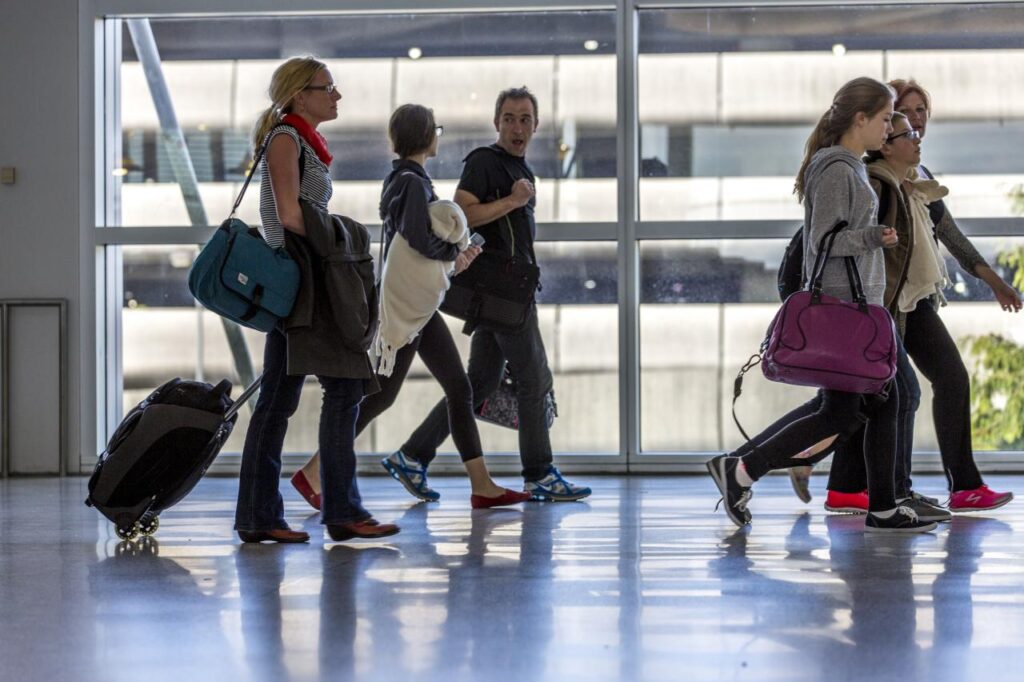Seattle-Tacoma International (SEA) has launched two pilot programs aimed at providing a seamless, touchless travel experience at the airport – SEA Spot Saver, which explores digital reservations for the TSA general screening security checkpoints, and happyhover, a technology deployed to airline check-in kiosks for travelers to check in and drop off luggage without touching the electronic screens.
“We can use technology to make the travel experience more streamlined and intuitive,” said Port of Seattle Commissioner Sam Cho. “Touchless solutions reduce stress for those traveling today but are the kind of innovations that will make the airport safer and more efficient for years to come. We appreciate the partnership of passengers and airlines to help test these programs for the benefit of our community.”
SEA is one of the first airports in the USA to investigate a ‘virtual queuing’ system as a solution for crowded general screening lines. Called SEA Spot Saver, it is a free, reservation-based system for TSA general screening security checkpoints. The pilot program will test if SEA Spot Saver successfully reduces wait times and crowding to better maintain physical distancing.
The pilot will operate daily from 4:00am-12:00pm through August 31, 2021, at Checkpoints 2 and 5 and aims to reduce congestion at the security screening zones – during busy travel periods checkpoints can serve between 40-50% of daily passengers in the peak morning period before 11:00am, according to SEA.
SEA Spot Saver is free for all general screening passengers who are traveling without a trusted traveler program to help provide a better, more efficient screening experience. SEA Spot Saver allows passengers to arrive at the airport and experience contact-free, expedited screening without an extra cost, membership or account.
Alaska Airlines passengers at TSA Checkpoint 5 will use the Pangiam solution, powered by Whyline and Copenhagen Optimization, while Delta Air Lines passenger at TSA Checkpoint 2 will use technology from VHT.
“These are the innovations and ideas that we love to make our guest experiences more convenient and stress-free, especially as more people get back flying again,” said Charu Jain, Alaska’s senior vice president of merchandising and innovation. “With very little effort, guests can lean on technology to get them through the security process quicker.”
“Our vision for the future of travel is aimed at creating a more seamless, less stressful experience for all,” added Helda Durham, Delta’s director of airport customer service in SEA. “The SEA Spot Saver pilot does just that for Seattle customers, which is why we are excited to support our great partners at Port of Seattle and the TSA in their efforts.”
Following the pilot completion later this summer, SEA will evaluate usage with passengers, customer feedback, and increases to line efficiency. If successful, the airport hopes to launch a broader program as the Port continues to use staffing and technology to make the security checkpoint experience as efficient as possible.
SEA is also evaluating a touchless technology with happyhover – where fingers are detected above an electronic screen – on common-use check-in kiosks available to various airline passengers, including jetBlue, Spirit Airlines, Korean Air, Volaris, Air Canada and Frontier. With this pilot program, hardware is mounted discreetly onto the top of the kiosk and creates an infrared sheet of light. The technology emulates a touch interface in mid-air so that the touchscreen responds when the light is broken. This removes the need for travelers to touch superfluous surfaces during the check-in process.


